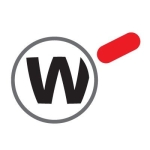What is our primary use case?
We've used the solution for perimeter and DMZ security as we host a website that is accessible online.
On the perimeter, we have Check Point acting as the entry point to our web server farm with load balancers. The access policy is configured with the least privilege, only allowing connections that are part of business requirements.
Intrusion prevention is enabled in prevent mode to detect and block well-known vulnerabilities and attacks. The device connects to Check Point's cloud for updates on signatures to new threats.
We are peering with Partners via Site-to-Site VPNs for Services.
How has it helped my organization?
1. It's offering perimeter security to publicly accessible sites. There's better security at the edge and DMZ with the use of access policies.
2. The activation of Intrusion Prevention Blades offers better security at the perimeter and between DMZ Zones. IPs also have prebuilt security profiles making deployments of IPS fast and efficient, and exceptions to the rule base are easy.
3. The use of a remote access VPN is used to connect to partner sites.
4. Check Point offers virtualized systems, making it easy to scale. Instead of buying new equipment, we have set up virtual systems for the DC and user networks.
What is most valuable?
1. Intrusion prevention. Preventing and detecting well know vulnerabilities to our publicly accessible systems is easy. Inbuilt predefined security profiles can be deployed out of the box.
2. Virtualized security. Virtualized products are used to provide more scalability and ease of administration to the network.
3. Identity awareness. Granular policies on the firewall are based on identities.
4. Site-to-site VPN. We can make connections with partners securely.
5. Reporting. Prebuilt reports that are already in a well-presented manner could be presented to management.
6. Access Policy and NAT rules base.
What needs improvement?
1. Complexity in upgrades. Currently, upgrades are quite cumbersome. I would prefer the click of a button and process upgrades.
2. Pricing. The pricing is quite high as compared to other industry firewalls (such as Cisco or Fortinet).
3. Documentation. They have to improve on providing more documentation and examples for certain features online. In other sections, it feels shallow and we could use more information and examples.
4. Complexity in system tweaks. There are some knobs that need to be tweaked at the configuration files on the CLI which can be considered complex.
5. Check Point Virtual Security. The features take a bit more time to be released as compared to physical gateways.
For how long have I used the solution?
I've used the solution from 2017 until now.
What do I think about the stability of the solution?
A word of caution, especially on new software: you might hit a couple of bugs. Therefore, the general recommendation is to wait for a few takes before upgrading to a major version.
With older versions it's stable.
What do I think about the scalability of the solution?
The solution offers high-performance devices ranging from small to big data centers.
Virtual Security offers up to 13 connected gateways helping with managed security.
How are customer service and support?
First-line support is hit or miss, and at times getting an engineer to assist on the call can take hours.
Opening tickets on the Check Point platform is ok with the first response depending on the workload of the engineers.
This is one place Check Point needs to improve.
How would you rate customer service and support?
Which solution did I use previously and why did I switch?
Previously we were using Cisco ASA 5585. However, the performance was not reliable, and scaling would have been an issue.
We opted to go with Check Point, which could handle high performance and scaling was easier. Check Point also offered IPS features which were easier. Check Point also had better reporting and management tools.
How was the initial setup?
The initial setup was a bit complex since we were deploying virtual systems.
The interface configurations, access policy, VPNs, and NAT setup were easy. The complexity was in understanding how Check Point handles virtualized security instead of physical security gateways.
What about the implementation team?
The initial implementation was with the help of a vendor with good knowledge of the product.
What was our ROI?
It's used to protect the organization from security threats and provide connectivity to our applications which is the main platform for business. That's the ROI we've noted.
What's my experience with pricing, setup cost, and licensing?
The pricing and licensing for Check Point are high.
Which other solutions did I evaluate?
Due to experience with Check Point, we did not evaluate other options (like Fortigate or Palo Alto).
What other advice do I have?
Generally, Check Point is a good product with a lot of security features that I would recommend to any organization.
Which deployment model are you using for this solution?
On-premises
Disclosure: I am a real user, and this review is based on my own experience and opinions.

















